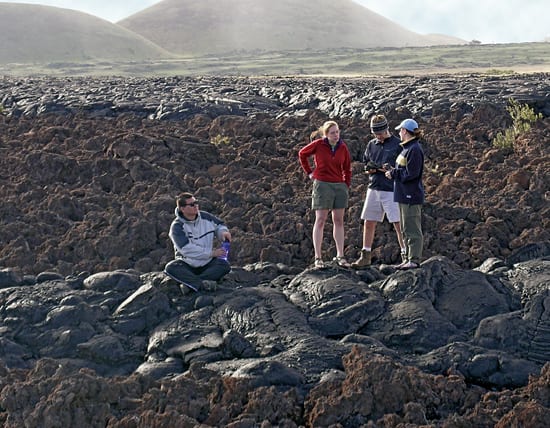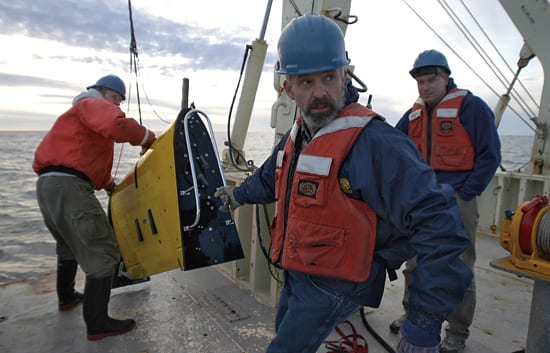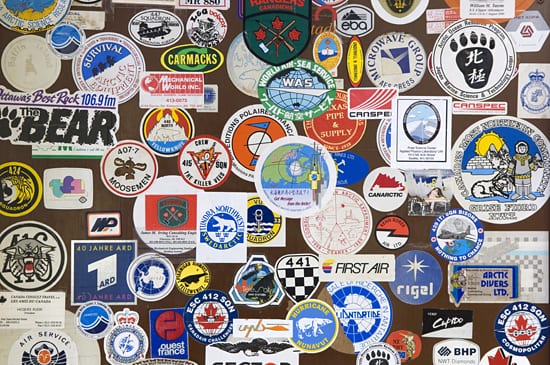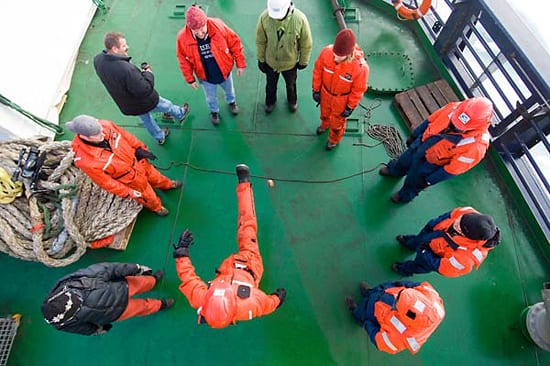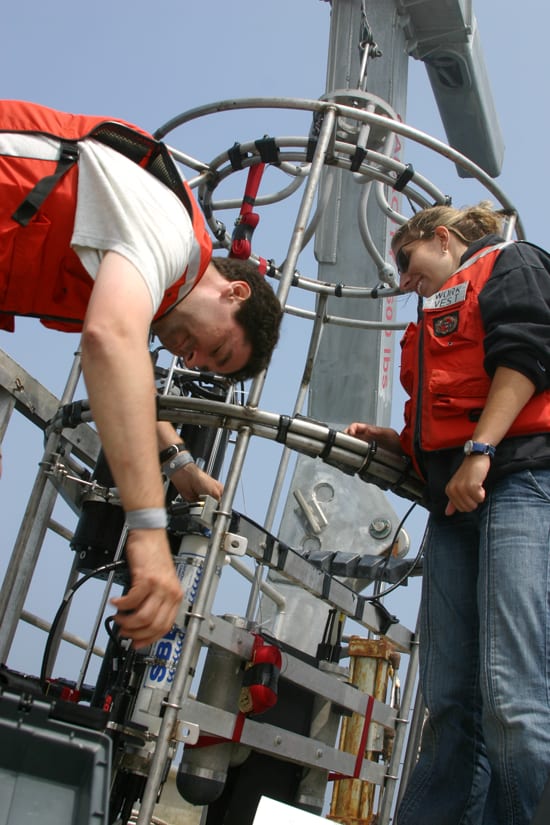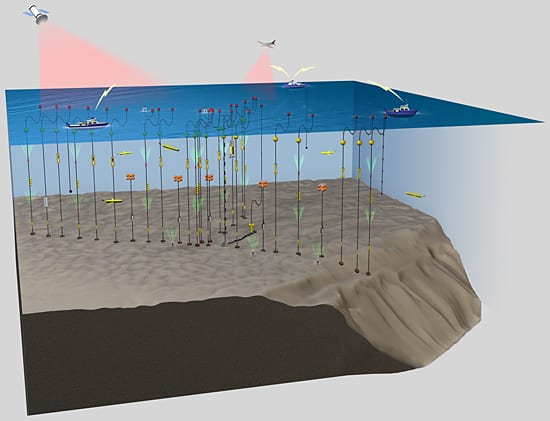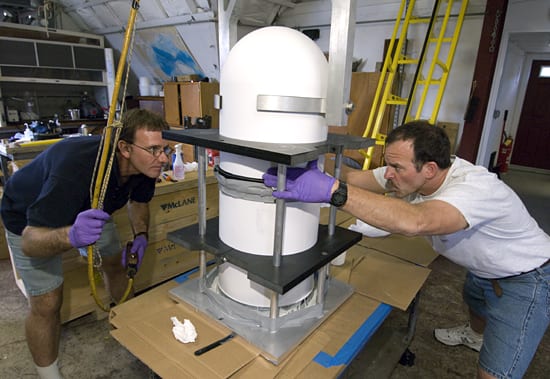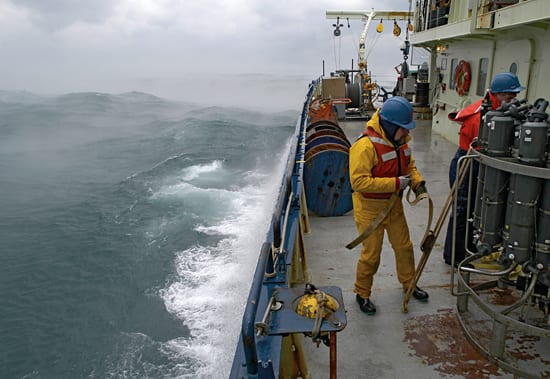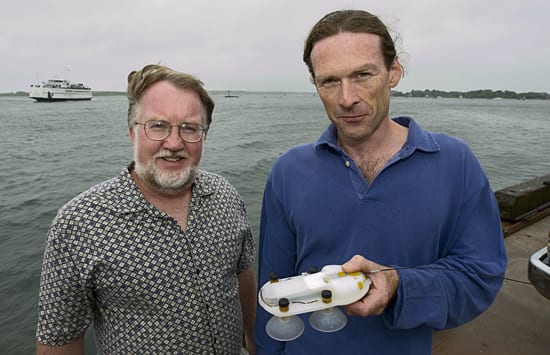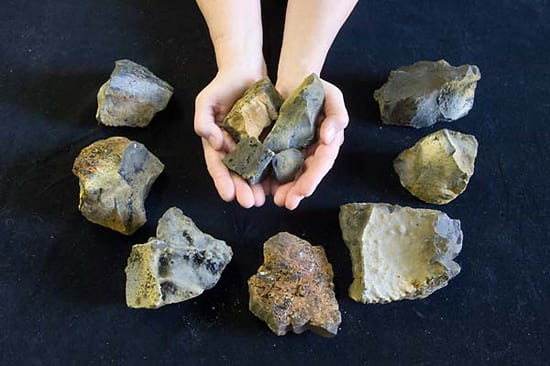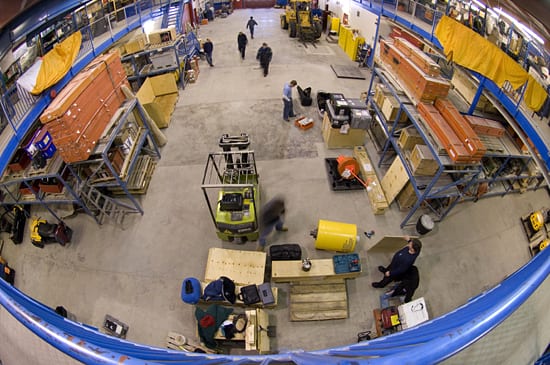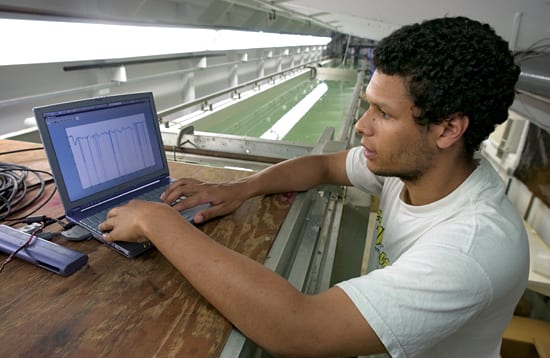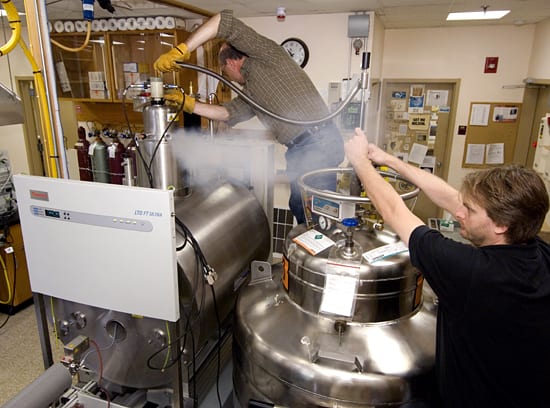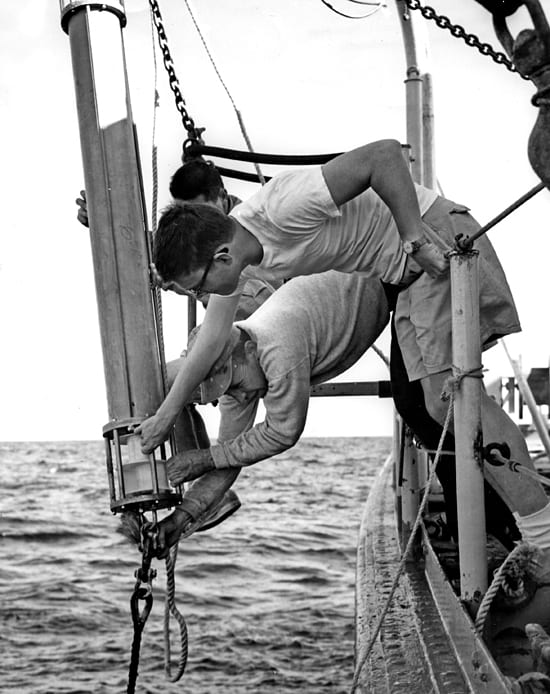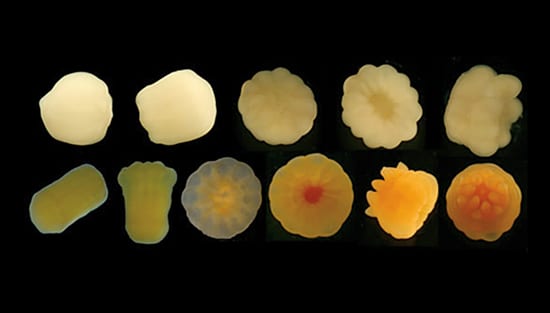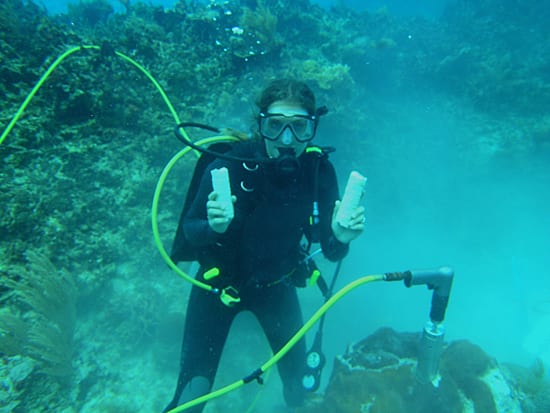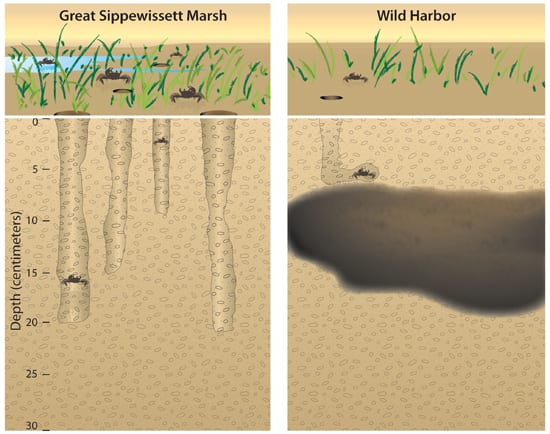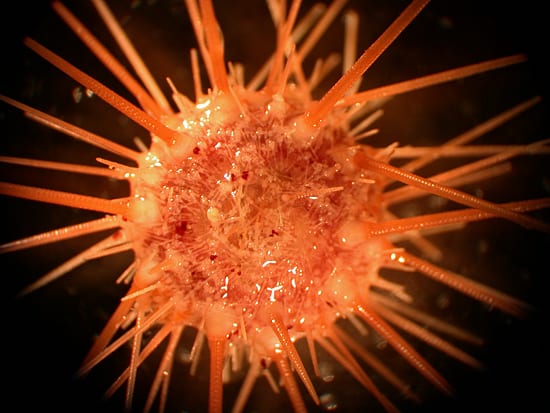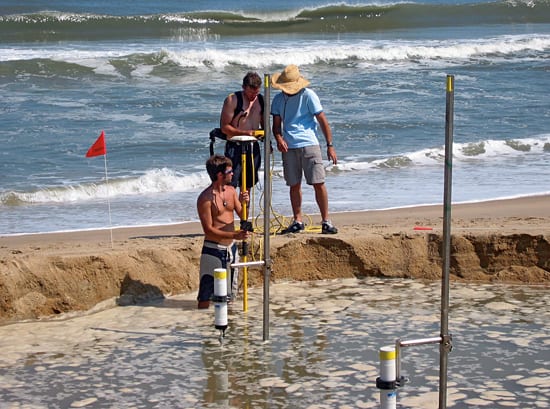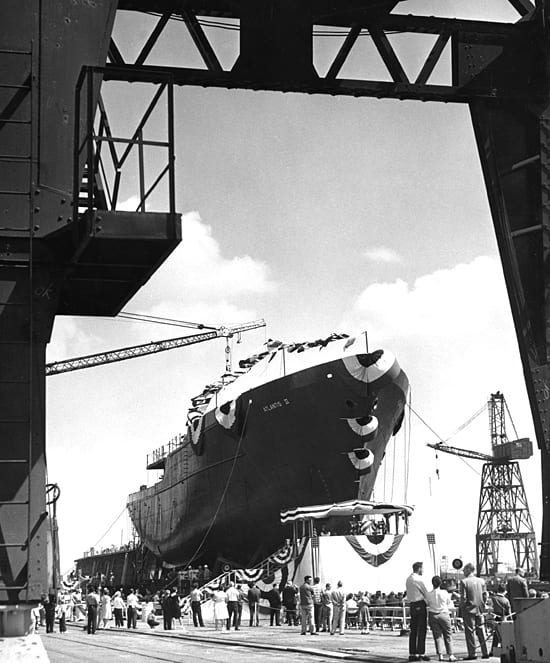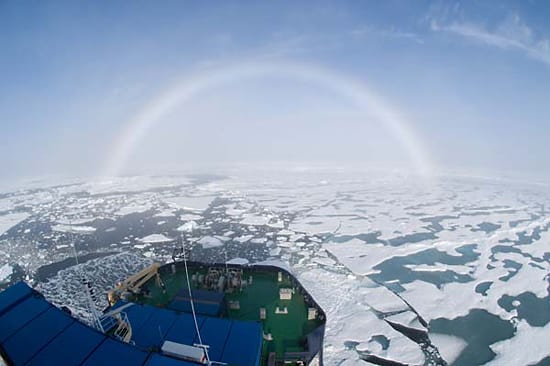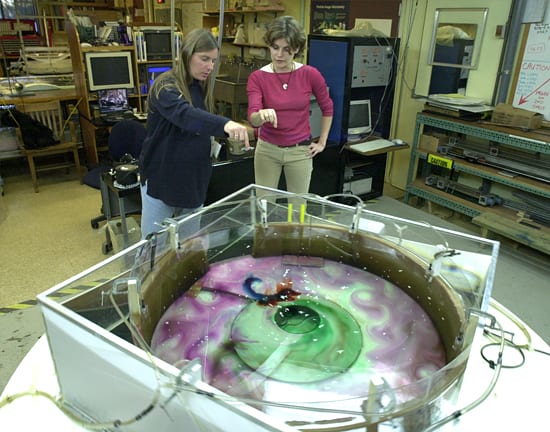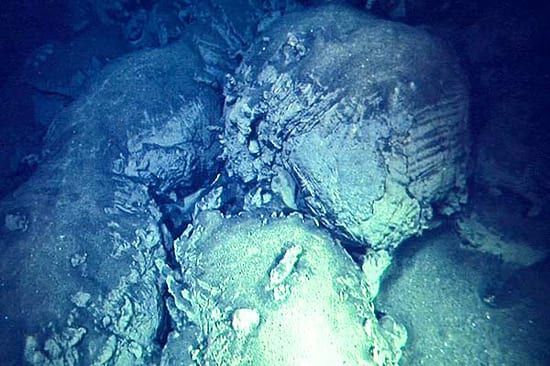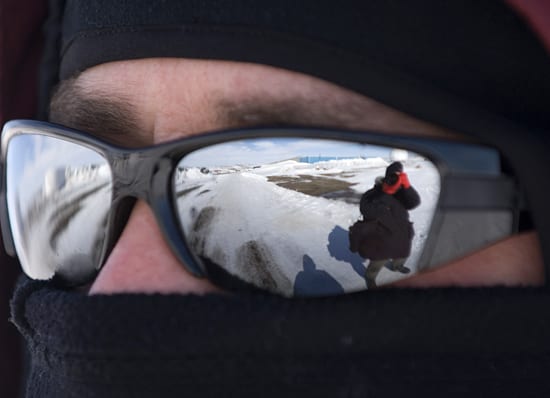Multimedia Items
The Other Side of Paradise
MIT graduate student Shichun Huang (sitting) joins MIT/WHOI Joint Program students Jessica Warren, Matthew Jackson, and Clare Williams on a tongue of pahoehoe (smooth) lava surrounded by aa (angular) lava…
Read MoreWinter Fishing Expedition
Mooring technicians Brian Kidd (University of Delaware) and Will Ostrom (WHOI) and physical oceanographer Glen Gawarkiewicz (WHOI) recover the Scanfish, a towed vehicle that measures temperature and salinity in the…
Read MoreSticking Around
Over the years, the Narwhal Hotel in Resolute Bay, Canada, has hosted adventurers, tourists, science teams, pilots, and oil, gas, and mineral prospectors from all over the world, a fact…
Read MoreHacky Sack Attack
How do researchers pass the time, relieve some mounting tension, and try to keep warm while waiting for their robotic vehicles and instruments to come home? “It happens at least…
Read MoreHunting for Whales’ Water
Mark Baumgartner and Melissa Patrician repair a conductivity-temperature-depth (CTD) rosette on the coastal research vessel Tioga. The biologists use the CTD to detect the water properties and nutrients at various depths…
Read MoreConcentrated Effort
In the largest oceanographic field experiment in WHOI history, 62 moorings, 350 oceanographic sensors, 6 research ships, 100 tons of equipment, airplanes, satellites, undersea gliders, and more than 50 scientists…
Read MoreGlued to Their Work
Chris Griner (left) and Glenn McDonald use a special epoxy to glue together sections of ceramic tubing, or “housings,” that will be used on Nereus. These pressure vessels provide safe…
Read MoreThis Ain’t No Pleasure Cruise
Craig Marquette (in yellow) and Glen Gawarkiewicz prepare to deploy the conductivity-temperature-depth (CTD) rosette for hydrography studies north of Cape Hatteras in January 2005. The winter cruise on the research…
Read MoreTag Team
Biologist Peter Tyack (left) and senior engineer Mark Johnson have been working together to study whale behavior using Johnson’s D-tag to record whale movements, depth, and sounds on dives. The…
Read MoreRock Beats Paper and Scissors
The towed seafloor sampler Camper grabbed these volcanic rocks from the seafloor of the Arctic Ocean for study by WHOI geologist Susan Humphris and colleagues. Now that the 40-day expedition…
Read MoreOut of the Cold
For several weeks each spring, Canadian researchers and logisticians from the Polar Continental Shelf Project (Canadian Energy, Mines, and Resources Department) open up their warehouse to American colleagues from the…
Read MoreThe Sound of Science
Jesse Austin-Breneman, a summer student fellow from MIT, prepares an experiment to calibrate an echo sounder in a flow tank. The sounder is used for measuring seafloor topography from autonomous…
Read MoreSome Assembly Required
Field engineers Rob Harper (right) and Bob Rich from Thermo Fisher Scientific pour liquid helium as they install a Fourier-transform ion cyclotron resonance mass spectrometer (FT-ICR MS) in the Fye…
Read MoreKeeping Current
Marvel Stalcup (foreground, with glasses) and Gus Day launch instruments from the research vessel Crawford in the 1960s. The sensor at bottom was an early electronic current meter, used to…
Read MoreBaby Pictures
The tiny offspring of two species of deep-sea corals from Antarctica changed from shapeless larvae (left) into tiny, tentacled corals (right) within 24 hours of brooding. Biologist Rhian Waller of…
Read MoreCore-al Samples
Jessica Carilli, a graduate student from the Scripps Institution of Oceanography, holds two core samples that she and WHOI marine chemist Konrad Hughen have just drilled from a colony of…
Read MoreDrunken Crabs
Through a series of field observations and laboratory experiments, graduate student Jennifer Culbertson, marine chemist Chris Reddy, and colleagues found that the burrowing behavior and other biological traits of salt…
Read MoreSweet Hitchhiker
This sea urchin was collected from the ocean floor near the Galapagos Rift in June 2002. The hitch-hiking urchin was found in the basket on the front of the Alvin…
Read MoreSurf’s Down
MIT/WHOI Joint Program student Alex Apotsos (front), research assistant Levi Gorrell, and scientist Mike Forte (with hat) of the U.S. Army Corps of Engineers, survey changes in beach shape in…
Read MoreDreams of Atlantis
The research vessel Atlantis II was officially launched on September 8, 1962, at the Maryland Shipbuilding and Drydock Co, though it was not until the next year that she made…
Read MoreSt. Louis Has Nothing on This Arch
Fogbows usually appear in the Arctic Ocean whenever overcast skies clear, as water droplets in the fog reflect and refract the beams of sunlight. The bow of the Swedish icebreaker…
Read MoreOcean on a Table
WHOI physical oceanographer Claudia Cenedese (left) and Rachel Bueno de Mesquita, a visiting researcher from the University of Rome, developed this laboratory experiment to study fluid flow and eddies around…
Read MoreCold Pillows
The camera on the new Camper towed underwater vehicle photographed these pillow lavas on the seafloor of the Arctic Ocean along the Gakkel Ridge in mid-July 2007. Researchers have been…
Read MoreSaving Face
Even in the springtime, the air and winds in the Arctic can be so cold that skin grows raw and wind-burned after just a few minutes. The moisture in your…
Read More
